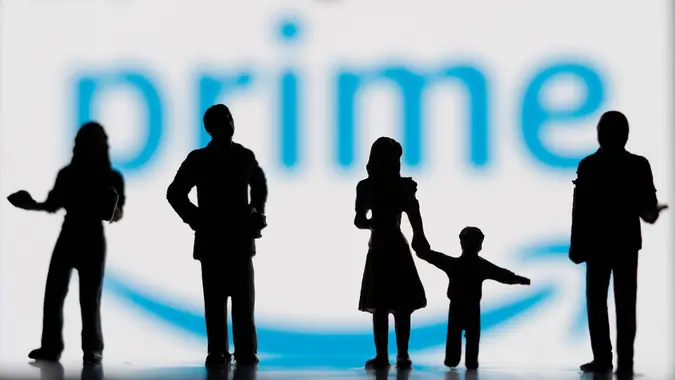I Cut My Student Loan Payments: Here’s How I Did It

Commitment to Our Readers
GOBankingRates' editorial team is committed to bringing you unbiased reviews and information. We use data-driven methodologies to evaluate financial products and services - our reviews and ratings are not influenced by advertisers. You can read more about our editorial guidelines and our products and services review methodology.

20 Years
Helping You Live Richer

Reviewed
by Experts

Trusted by
Millions of Readers
Most college graduates would tell you that a student loan is the bane of their existence. It’s understandable because it’s an immense debt you end up paying well into adulthood. I became invested in doing anything I could to lower the monthly payments, so the rest of my bills could be paid on time without breaking the bank. I managed to cut my student loan payments, and you can do something similar to lower yours with the following 7 methods.
Change Your Repayment Plan
The repayment plan you first selected isn’t permanent. If what worked before is no longer working – you can modify it. You may benefit greatly from choosing an income-driven repayment (IDR) plan, of which there are four primarily. If you have found that your repayments are too steep relative to your overall income, you could make use of income-based repayment (IBR), which essentially limits the payments to a percentage of your discretionary income (your income minus the corresponding federal poverty amount for your household), usually 10% or 15%, as explained by Credible.
Extend your Loan
Another option is to refinance your loan or take out a new loan with a different repayment period. While these accrue greater interest, the monthly amount is lower so you can struggle less with your bills in the meantime. Make sure you fully research the contingencies, as refinancing involves a private lender replacing the federal loan – meaning you’ll lose out on federal benefits, as stated by Forbes.
Get Help From Your Employer
The CARES Act enabled your employer to give you tax-free student loan assistance. The Consolidated Appropriations Act of 2021 extended the period during which they can do so to Dec. 31, 2025. If you work in health care or the legal system, you can qualify for a Loan Repayment Program (LRP), assuming you fall below the income threshold in the corresponding field and have been working there long enough.
Loan Forgiveness
Various programs allow you to pay less through student loan forgiveness. Public Service Loan Forgiveness (PSLF) could eliminate your remaining balance if you work for the government or a non-profit organization. Teacher loan forgiveness applies to those teaching for five full-time consecutive years at low-income schools or certain agencies. Income-driven forgiveness is attached to IDR plans, where you can have your remaining balance forgiven at your term’s end, assuming you made the required number of payments.
Make Use of a Relocation Program
Some programs offer a lump sum toward your student loan, like the Kansas Rural Opportunity Zones – 95 designated counties where new full-time residents can access repayment assistance. The Tulsa Remote program offers grants similarly. If you’re already intending to move, it may be worth checking if there are any such programs available in the area.
Use Autopay
All federal direct loans, as well as many private lenders, offer a discount in the form of 0.25% off your interest rate for setting up direct payments from your bank account, according to the Consumer Finance Protection Bureau (CFPB).
Claim Your Loan Interest on Your Tax Return
You may be able to claim up to $2,500 of your student loan interest based on your income and tax filing status, per the CFPB. This would equate to you retroactively paying less per month.
More From GOBankingRates
 Written by
Written by  Edited by
Edited by 

























